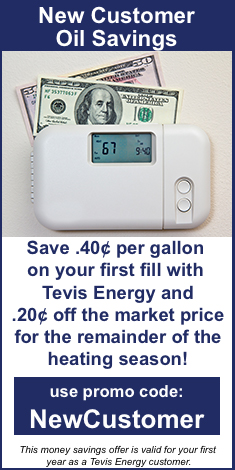Page Contents
As highlighted by Energy Star, your home’s cooling and heating systems are responsible for a substantial portion of your energy expenditures, making up nearly 50% of your overall energy bills. This means there’s a significant potential for savings if homeowners take informed and strategic steps concerning these systems’ maintenance, repair, and replacement. A key term to understand is the AFUE rating, particularly for heating systems, as it is crucial in determining your energy consumption and subsequent bills. Delving into the specifics of the AFUE rating can provide insights into how you can optimize your heating efficiency and cost-effectiveness.
Keep reading to learn everything there is to understand about the AFUE rating and its impact on your home’s energy dynamics.
Understanding the AFUE Rating
Originated by the American Society of Heating, Refrigerating and Air Conditioning Engineers (ASHRAE), the Annual Fuel Utilization Efficiency (AFUE) is expressed as a percentage and stands as a benchmark for gauging the energy efficiency of heating appliances, be it water heaters, boilers, or furnaces. Simply put, AFUE represents the proportion of heat generated relative to the entire quantity of fuel the heating device uses.
To determine your heater’s AFUE rating, divide the total fuel consumed by the unit by the heat it produces, typically measured in British thermal units (BTU). For instance, if your system boasts an AFUE score of 85%, this implies that 85% of the fuel’s energy is harnessed for heating. The remaining 15% is lost due to inefficiencies in burners and chimneys, among other factors. It’s essential to highlight that AFUE doesn’t factor in heat losses within HVAC piping and ducts. Such losses can be substantial. As per the US Department of Energy (DOE), ducts situated in places like garages, attics, and other non-insulated areas might experience up to 35% energy wastage from the heating system’s output.
A superior AFUE score indicates heightened energy efficiency, and the reverse is also true. Essentially, higher AFUE ratings translate to reduced fuel expenses. Notably, electric heat pumps don’t use AFUE when in heating mode. They utilize the Heating Season Performance Factor (HSPF) instead. Presently, the US Department of Energy adopts AFUE as the official metric to convey the combustion efficiency of heating systems.
The DOE has established baseline AFUE ratings for gas heating systems to encourage energy conservation nationwide. Currently, these stand at 80% for the Southwest and 90% for the Northern regions. As a result, the vast majority of contemporary heaters manufactured now boast AFUE ratings of 90% or even higher.
How To Find the AFUE Rating
The Federal Trade Commission mandates that boiler and furnace producers disclose the AFUE ratings to aid consumers in making knowledgeable choices. This crucial data is typically present on the EnergyGuide label, recognizable by its yellow hue, seen on many electric appliances. If the rating isn’t evident on this label or the label is missing, one can refer to the manufacturer’s website, the retailer’s site, or the appliance’s user manual. Understanding that their energy efficiency generally diminishes as heating systems age is vital. Thus, the AFUE rating provided by the manufacturer might be somewhat higher compared to the system’s real-time performance. Given this, it’s recommended to have an expert HVAC specialist assess your system’s current AFUE rating.
Leveraging AFUE Ratings as a Homeowner

The AFUE rating offers insight into a boiler or furnace’s operational efficiency. Over time, heating systems tend to lose their efficacy, resulting in older and less efficient systems having diminished AFUE scores. Before 1975, there were no mandated minimum AFUE standards for heating systems sold in the US. It wasn’t until 1987 that the DOE established a baseline AFUE of 78%, which was further increased to 80% in 2015.
Systems that are 15 years or more typically lack energy efficiency, making them costly in terms of energy consumption. Upgrading to even an 80% AFUE low-efficiency boiler or furnace can yield notable energy savings and consequent reductions in utility bills. Opting for a system with an even higher rating is advisable to maximize these benefits. The most adept systems available today achieve an impressive 98.5% AFUE. Your AFUE rating choice can profoundly influence your monthly energy costs and environmental impact.
Is Investing in a High-Efficiency Heating System Worth It?
Deciding on this entails evaluating multiple factors. The foremost consideration is your location. Suppose you reside in a notably chilly area and depend on a boiler or furnace regularly. In that case, a high-efficiency furnace or boiler stands out as a prime choice, promising enhanced energy savings over its lifespan. Compared to low-efficiency counterparts, a high-efficiency boiler or furnace can offer up to 18.5% superior energy conservation. Research data indicates that American homes typically shell out approximately $600 or more annually on heating. With a high-efficiency setup, this could translate to annual savings of roughly $111.
Next, your financial allocation plays a pivotal role. Typically, high-efficiency heating systems have a price tag of roughly $1,000 steeper than their mid-efficiency counterparts. However, the math becomes interesting when you consider the average lifespan of furnaces, which spans 15 to 20 years. With an annual savings of $111 stretched over 15 years, you’re looking at a cumulative saving of over $1,600. This means, in the long run, the initial extra expenditure on the high-efficiency boiler or furnace can be more than offset by its energy savings.
Characteristics of High AFUE Heaters
Heating systems with a high AFUE rating integrate advanced technologies to ensure peak energy efficiency. Here are some prominent features commonly associated with these high-performing systems:
- Variable-speed blowers
- Secondary heat exchanger
- Variable heat output
- Direct spark ignition systems
- Enhanced air filtration systems
In Summary
AFUE stands as a benchmark for gauging a heating system’s energy efficiency. The US Department of Energy relies on it to establish boiler and furnace efficiency criteria. Consequently, any heating unit marketed in the US is mandated to achieve an AFUE rating of at least 80% or higher.
Reach Out to Modern Comfort for All Your HVAC Needs
Modern Comfort stands out as a premier provider of top-notch heating and cooling services in Central Maryland and the Southern and Central Pennsylvania regions. Our team consists of highly trained technicians, each certified to deliver unparalleled HVAC maintenance, repairs, installations, and replacements. Trust in their expertise to service your HVAC system to perfection.
At Modern Comfort, we assure you of the most affordable rates for heating and cooling services in the vicinity. Our maintenance solutions are designed to elevate your comfort, bolster energy efficiency, and curtail your home’s heating and cooling expenses. If you’re in the market for an HVAC repair or considering a system replacement, we’re poised to recommend the optimal solution tailored to your residence and budget. We stand firmly behind the quality of our work, offering guarantees to ensure you’re completely satisfied.
Don’t hesitate to call Modern Comfort to set up a service appointment. We’re happy to provide complimentary, in-home estimates.
You can click here to contact us now or call us at (410) 429-7252 (MD residents) and (717) 489-3939 (PA residents) to find out more! Click the link to view our service area.


Recent Articles